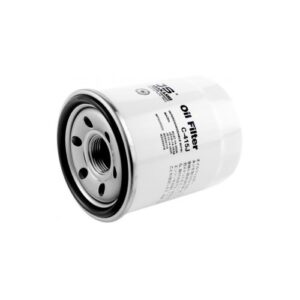
Ever since I’ve owned a car, I’ve always taken it to a garage to get the oil changed. Every 5,000 km I would find myself sitting in a lounge munching on complimentary donuts while some other man changed my oil.
But it never felt right.
I would stare out the window into the garage and watch the mechanics work on my car. I would think, “That looks easy. Why am I paying another man ksh 1500 for a job that I could do myself?”
In addition to the resentment I felt for paying another man to change my oil, I was also jealous. I admired the knowledge and skills those men who worked on my car had, and I wanted to be able to do it too.
Of course, I never did anything about it, mainly out of laziness.
Well, after 10 years of taking my car to a garage to change my oil, I finally got around to learning how to change the oil in my car last month. And boy did it feel good.
Below, I provide a short guide on how to change the oil in your car. Let’s get started
The Benefits of Changing Your Oil Yourself
Save money. Getting your oil changed at the petrol station or similar shops usually runs between ksh 3000 to ksh 3500. Approximately 30% the cost goes to labour. They have deals every now and then, but they’re few and far between. Changing your oil yourself will only set you back about ksh 2000 for a new filter and some new oil. In this tough economy, every little bit helps. The manly man is self-reliant and frugal.
You won’t get stuff stolen from your car.
You’ll feel manly. Nothing will boost your manly confidence like learning a manual skill and doing a job yourself. The satisfaction you get after changing your oil is way more fulfilling than the satisfaction you’ll get getting a perfect score on Guitar Hero. You’ll get your hands greasy, and you’ll have the manly smell of sweat and oil emanate from you.
How to Change Your Motor Oil
Gather your tools and materials. You don’t need much to change your oil. Below we list the essentials:
- New oil filter. Different cars require different sized oil filters. Contact us to confirm the correct oil filter you need. We only need your car make, model and year.
- Oil. You need enough oil to refill your engine after you drain it. Most cars require 4 or 5 litres of oil. Also, make sure you get the correct oil grade for your car. Read our article on conventional vs synthetic engine oil
- Oil filter wrench. Sometimes you can get the filter off just by unscrewing it by hand. If it’s too tight, bust out an oil filter wrench. It’s an attachment that you put on the end of a socket wrench. Make sure you get the right size filter wrench attachment for the size of your oil filter.
- Socket wrench set. You’ll need a socket wrench to unscrew the drain plug and maybe to unscrew the oil filter.
- Something to catch the old oil. Anything will work. You can get a fancy oil drip pan or you can use an old bucket.
- A funnel.
- Some old rags. In case you drop the oil plug into the oil pan and you need to wipe it off. They’re also good for wiping off your hands.
- Car ramp. While not a necessary item, it can make your job easier. You can buy plastic ramps that will elevate your car’s front off the ground. This will give you more room to work underneath your car.
Warm up your car. To ensure that you drain all the old oil out of your engine block, warm it up by taking your car for a spin. You don’t want the oil to be too hot, just warm enough so it thins out a bit. To tell if your car is warmed up enough, just turn on your heater. When your feet get nice and toasty, you’re ready to drain the oil.
Park the car on a flat surface. Park your car on a flat surface and engage the parking break. If you have those ramps, place them in front of your front wheels and drive up them. It’s always good to have someone out front guiding you so you don’t end up driving off the other end of the ramps. For added safety, put blocks behind both rear tires.
Pop the hood and remove the oil filler cap. Removing the oil filler cap can help the oil drain faster. It allows air to flow into the engine as the oil drains out.
Remove the oil plug. Locate the oil plug underneath your car. It’s pretty easy to find. It’s a fairly large bolt on the oil pan’s bottom. Take an appropriate sized socket or wrench and start unscrewing the nut.
If the nut is too tight, try this little trick: get a piece of pipe that’s a bit longer than your socket wrench and place it over your socket wrench’s handle. This will give you some added leverage.
Don’t remove the oil plug completely with your wrench or you risk getting oil all over the place. Loosen it enough so that you can start unscrewing it with your fingers. Before you remove the plug, place your drip pan underneath the hole. When everything looks lined up, remove the plug. Make sure to hold onto the oil plug tightly or else you’ll have to fish for it in your drip pan.
Here is how an oil filter looks like
Let the oil drain. After you remove the oil plug, let the oil drain out completely. It takes about 2 minutes for most engines to drain.
Remove the oil filter. Probably the hardest part in removing an oil filter is finding it on your engine. The first time I changed the oil, I spent a couple of minutes underneath my car scratching my head looking for the damn thing. The problem is there isn’t a standard position for where oil filters go, so it could be on your engine’s side, back, bottom, or top. Just look at your new oil filter and start looking underneath your car for something that looks similar. That’s your oil filter.
Now if the car manufacturer decides to put your filter in a weird place, it can be hard to remove. You might have to contort your arm in weird ways to unscrew it, but be assured you can remove it.
Oftentimes you can simply unscrew the filter by hand. However, if it’s too tight, bust out your filter wrench. Give it a few turns until it loosens up. Once it does, remove the filter wrench and finish unscrewing the filter by hand.
Before you remove the filter, make sure to have your drip pan underneath it. When you remove the filter a good stream of oil will come out.
When you remove the oil filter, make sure the rubber gasket ring comes off with it. If it stays on the car, the new filter won’t get an adequate seal on the engine.
Install the new oil filter. Dip your finger in some new oil and smear it on the gasket ring of your new filter. This will help the filter seat better against the engine. Thread the new filter onto the hole where the oil filter goes. It doesn’t take much to tighten your oil filter. Tighten it with your fingers until it stops turning. Then give it one more strong half turn. That should do the trick. Some oil filters come with instructions on how many turns you need to give a filter to tighten it. When in doubt, follow the instructions.
Replace the oil plug. Some mechanics suggest replacing the sealing washer on your oil plug before you start tightening it. If it’s a metal one in good condition, you can get away without replacing it. Put the washer in place and thread the drain plug back into its hole. Start tightening. When it’s nice and tight get out from under your car and remove the drip pan.
Refill the engine with oil. Place your funnel in the oil filler hole on the top of your engine and start filling your car up with new oil. Again, depending on the car, 4 to 5 litres should do the trick. Once the oil is all in, screw on the oil cap and close the hood.
Let the car run. When you’re all done, start the car and let it run for about 5 minutes. This does two things. First, it allows your engine to regain proper oil pressure. Second, it gives you a chance to see if you have any leaks near your oil plug and oil filter. If you see any leaks, stop the car and tighten the plug and filter as needed.
Dispose of your old oil.
Credits: AOM


It would be good to show the correct oil disposal ways, otherwise we end up polluting the environment.
Pingback: Save Money On Car Maintenance - Rotate Your Tires - Polish Venture